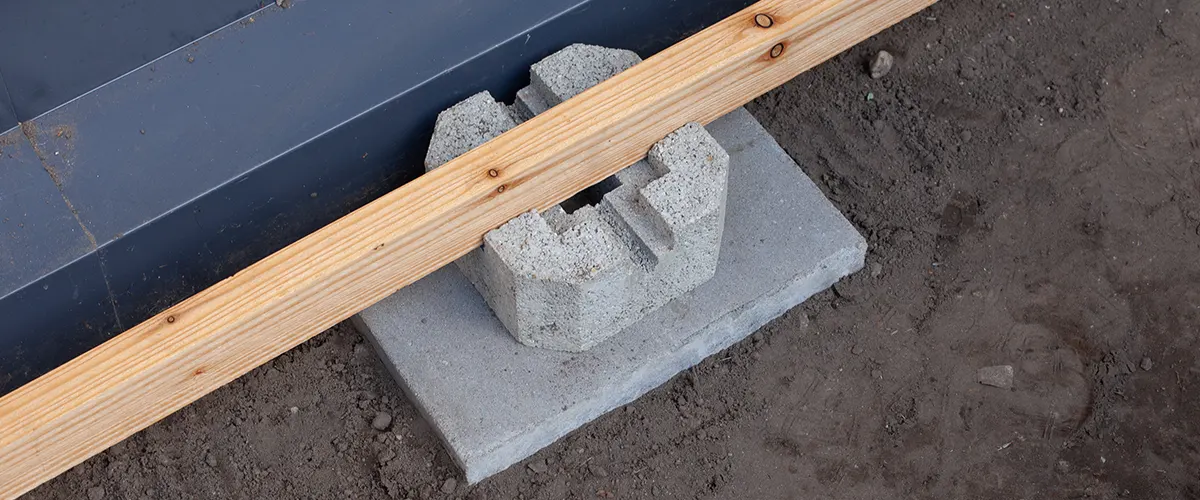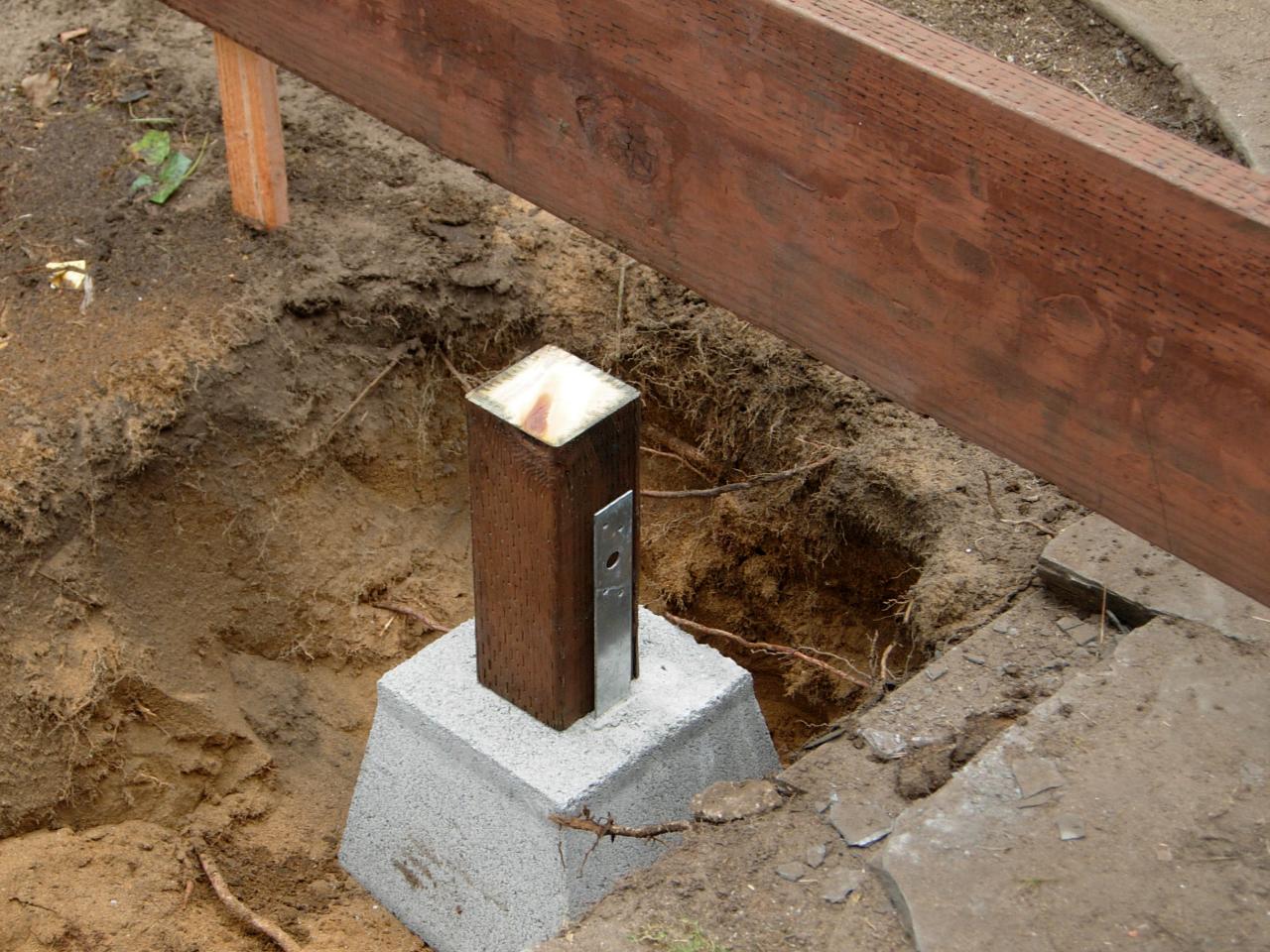Deck Footings 101: Navigating the Fundamentals for a Secure and Sturdy Deck
Deck Footings 101: Navigating the Fundamentals for a Secure and Sturdy Deck
Blog Article
Make Sure Stability and Long Life With Correctly Mounted Deck Grounds
Deck grounds might not be the most attractive facet of deck building and construction, yet they play a vital duty in making sure stability and longevity. In this discussion, we will certainly check out the significance of appropriate deck footings, elements to consider throughout setup, different kinds of grounds offered, step-by-step installation guide, and upkeep pointers for making sure lasting footings.

Importance of Appropriate Deck Footings
Why are effectively mounted deck grounds vital for the security and long life of your deck? Deck grounds are the structure on which the deck rests, transferring the load from the deck to the ground.
Firstly, effectively mounted deck grounds disperse the weight of the deck uniformly, stopping any type of uneven settling or sinking. This is especially essential in locations with unpredictable soil, as it aids to minimize the danger of the deck moving or collapsing. Furthermore, well-installed footings ensure that the deck continues to be level, preventing any type of architectural damage that can take place when a deck becomes irregular.
Secondly, correctly set up footings provide a strong anchor for the deck, preventing too much movement and guide. This assists to maintain the architectural integrity of the deck, minimizing the risk of crashes or injuries. It also minimizes the damage on the deck, enabling it to withstand the components and routine use for a longer amount of time.
Factors to Take Into Consideration for Deck Footing Installment
When setting up deck grounds, there are several important factors to take into consideration for correct setup. Different soil kinds have various load-bearing capacities, so it is vital to carry out a dirt test to guarantee the footings can sustain the weight of the deck and its owners. By taking right into account these elements, you can ensure the correct setup of deck footings and appreciate a long-lasting and secure deck.
Types of Deck Footings to Pick From
There are numerous different kinds of deck grounds available for you to pick from. Each type has its very own advantages and disadvantages, so it's crucial to consider your certain requirements and the conditions of your deck prior to deciding.
One common type of deck ground is the concrete ground. This includes digging holes in the ground and pouring concrete right into them to create a solid foundation. Concrete grounds are long lasting and supply outstanding stability, making them ideal for decks in locations with challenging dirt problems or high wind tons.
Another alternative is the helical pier ground, which contains a steel shaft with helical plates that are screwed right into the ground. These grounds fast to install and can be made use of in different soil types, consisting of sandy or clay soils. They are also flexible, enabling for easy progressing of the deck.
Sonotube footings are an additional prominent choice. These grounds are created by positioning a cardboard tube in an opening and filling it with concrete. Sonotube grounds are relatively very easy to set up and offer adequate security for smaller decks or in locations with less requiring soil problems.

When selecting the sort of deck ground, it's critical to take into consideration factors such as dirt problems, deck dimension and weight, local building regulations, and personal choices. By picking the ideal ground type, you can make sure the security and durability of your deck.
Step-by-Step Guide for Installing Deck Footings

Determine the place: Start by noting the exact setting of each footing using stakes and string (Deck Footings). Think about any type of neighborhood building codes or laws regarding obstacle ranges
Dig the holes: Use a message opening miner or an auger to dig the openings for the grounds. Usually, a deepness of at least 36 inches is recommended for security.
Degree the openings: Guarantee that all-time lows of the openings are degree (Deck Footings). This can be attained by utilizing a level or a straight board throughout the top of the openings
Include crushed rock: Place a layer of gravel at the base of each opening to boost drain and protect against the ground from penetrating the soil over time.
Insert the footing forms: Put the footing forms right into the holes, guaranteeing they are centered and level. Usage stakes to safeguard them in position.
Mix and pour concrete: Comply with the instructions on the concrete mix bag to prepare the concrete. Put the concrete right into the ground types, filling them completely.
Smooth the surface: Use a trowel to smooth the surface area of the concrete and eliminate any kind of air pockets. Enable the concrete to treat according to the maker's directions.
Maintenance Tips for Lasting Deck Footings
Proper maintenance is critical for ensuring the longevity and security of deck grounds. By routinely evaluating and keeping your deck grounds, you can avoid damages and potential security hazards.
Normal cleansing is also vital for maintaining deck footings. Debris, greenery, and dirt can collect around the grounds, which can cause moisture build-up check my reference and decay. Cleaning the grounds helpful hints consistently, utilizing a pressure or a brush washing machine, can assist stop these concerns and extend the life expectancy of your deck.
Along with cleansing, it is important to keep the area around the footings clear of any type of blockages. Avoid stacking items against the footings or enabling plants to grow also close to them. These blockages can catch dampness and create the grounds to deteriorate over time.
Lastly, regular resealing of the footings is advised to shield them from dampness and various other ecological variables. Using a water resistant sealant can assist stop water damages and expand the life expectancy of the grounds.
Final Thought
To conclude, proper installation of deck footings is important for ensuring security and longevity of your deck. Variables such as dirt type, lots capacity, and regional building regulations require to be thought about when choosing the best kind of deck grounds. Complying with a step-by-step overview for installment and routine upkeep will certainly help to make certain the footings remain sturdy and resilient.
In this conversation, we will explore the importance of correct deck footings, factors to think about throughout installment, additional info different kinds of footings available, detailed setup guide, and upkeep pointers for making sure lasting footings. Deck grounds are the structure on which the deck rests, moving the load from the deck to the ground.One typical type of deck ground is the concrete footing. Place the footing types: Insert the ground forms into the openings, ensuring they are focused and level.In verdict, proper installment of deck grounds is critical for making sure security and longevity of your deck.
Report this page